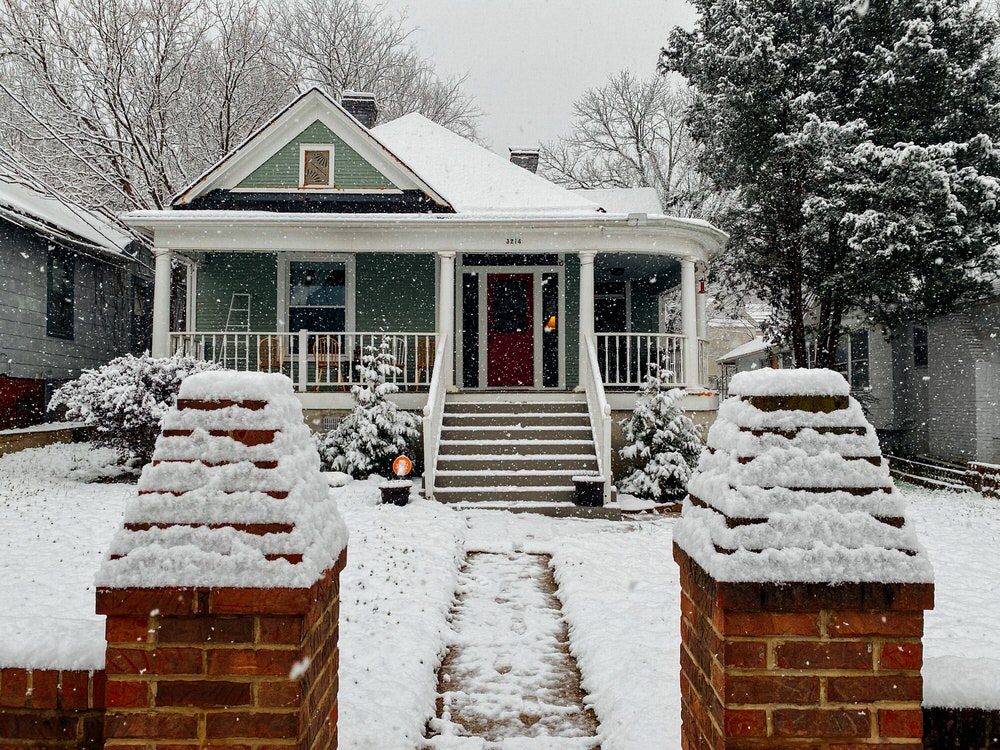
The winter is an exciting time of the year filled with festive occasions. This is a season when you probably also spend the most time at home. But unfortunately, it is during the winter months that any issues with your home often become apparent. With the temperatures dropping, and the weather outside cold and wet, the last thing you want is for the inside of your home to be the same.
Preparing your home for the colder temperatures and wet weather is essential to ensure that your home is warm and cosy when winter arrives. Here are some of the steps that you can take to ensure your home is weatherproof and fully prepared for the winter and beyond:
Check Your Roof
Checking your roof before the severe weather comes is crucial. Any existing problems with your roof will be highlighted when the weather turns colder and wetter. So looking out for the signs of potential leaks and roof damage will help you to prevent issues from worsening. Looking up at your roof from ground level after a storm is a simple but often effective way to quickly detect a broken or missing tile.
Spotting a broken tile or a damp patch on your ceiling are signs that you should pay attention to. These are often the first indications that your roof is in need of repair. So, organising a roofing contractor Roanoke to come and inspect your roof and for any repairs to be carried out is vital. Heavy rain, snow, and strong winds could all cause further damage to your roof if repair work is not carried out quickly.
Insulate Your Pipes
Freezing temperatures can cause significant issues for your home’s plumbing. One common problem that occurs is pipes becoming frozen and bursting. Dealing with a plumbing emergency is the last thing that you need when the winter weather hits. Burst pipes can cause you to be left without water. So, insulating your pipes with lagging is essential to ensure that your pipes have the cold weather protection they need to prevent them from bursting.
Deal With Damp Quickly
If you notice any signs of dampness, now is the time to act. There are many different signs that damp is present in your home, and the winter months are when these are likely to be the most noticeable. Signs to look out for include discoloured patches on your walls or ceilings, mould and mildew growing inside your home, walls and flooring feeling wet to the touch, and a musty smell. Many damp problems are caused by condensation. However, dampness in your home can be caused by a range of different issues.
Dealing with damp and mold in your home can be a frustrating challenge, but it’s essential to address it promptly to maintain a healthy living environment. Begin by identifying and fixing any sources of moisture, such as leaks or poor ventilation. Regularly inspect areas prone to dampness, like bathrooms, basements, and kitchens. Consider investing in mold-resistant paints and materials to prevent future growth. Additionally, scheduling mold testing in Mount Airy, MD, or wherever you are, can provide valuable insights into the extent of the problem and guide effective remediation strategies.. Taking proactive steps to tackle dampness and mold not only improves air quality but also safeguards your home and your family’s well-being.
Getting a professional to check that your home has adequate dampproofing and has been sealed with a dampproof coating such as RIW toughseal should help you to get to the root cause of damp problems.
Clear Your Gutters
Fallen leaves are everywhere in the autumn, and many of these make their way into the guttering of your home. This means that gutters can quickly become clogged with dead leaves, moss, twigs, and other debris. If this debris is not removed from your gutters, they can become weighed down and unable to function as they should during a heavy rainstorm.
Gutters that are weighed down by debris can easily break, and this will send water cascading down your walls instead of being channelled through the downpipe. Eventually, this can cause the water to penetrate the walls of your home, leading to the formation of damp and even damage to the foundation of your home if the water pools at ground level.
Before the winter weather arrives, it is advisable to arrange for your gutters to be cleaned so that all of the debris can be cleared away.
Prepare Your Garden And Driveway
As well as weatherproofing your home, making sure your driveway is safe to walk on is also key to preparing for colder temperatures. Just like gritters lay down a layer of salt on the roads to stop them from icing over, doing the same for your driveway and paths is a good idea. Make sure you have your own supply of salt, or maybe a communal grit bin for your neighbourhood.
It is important to also devote some attention to preparing your garden for the onset of the changing weather. Packing up your garden furniture and storing it undercover wherever possible is advisable to prevent it from rotting or rusting if left outside during winter. Other items in your garden, such as trampolines or play equipment, are best stored in your garden shed or garage over the winter months. These items can be quickly caught by the wind and can travel a long way if a strong gust catches them! So, to avoid any garden mishaps, it is best to safely store play equipment out of harm’s way while it is not in use.


